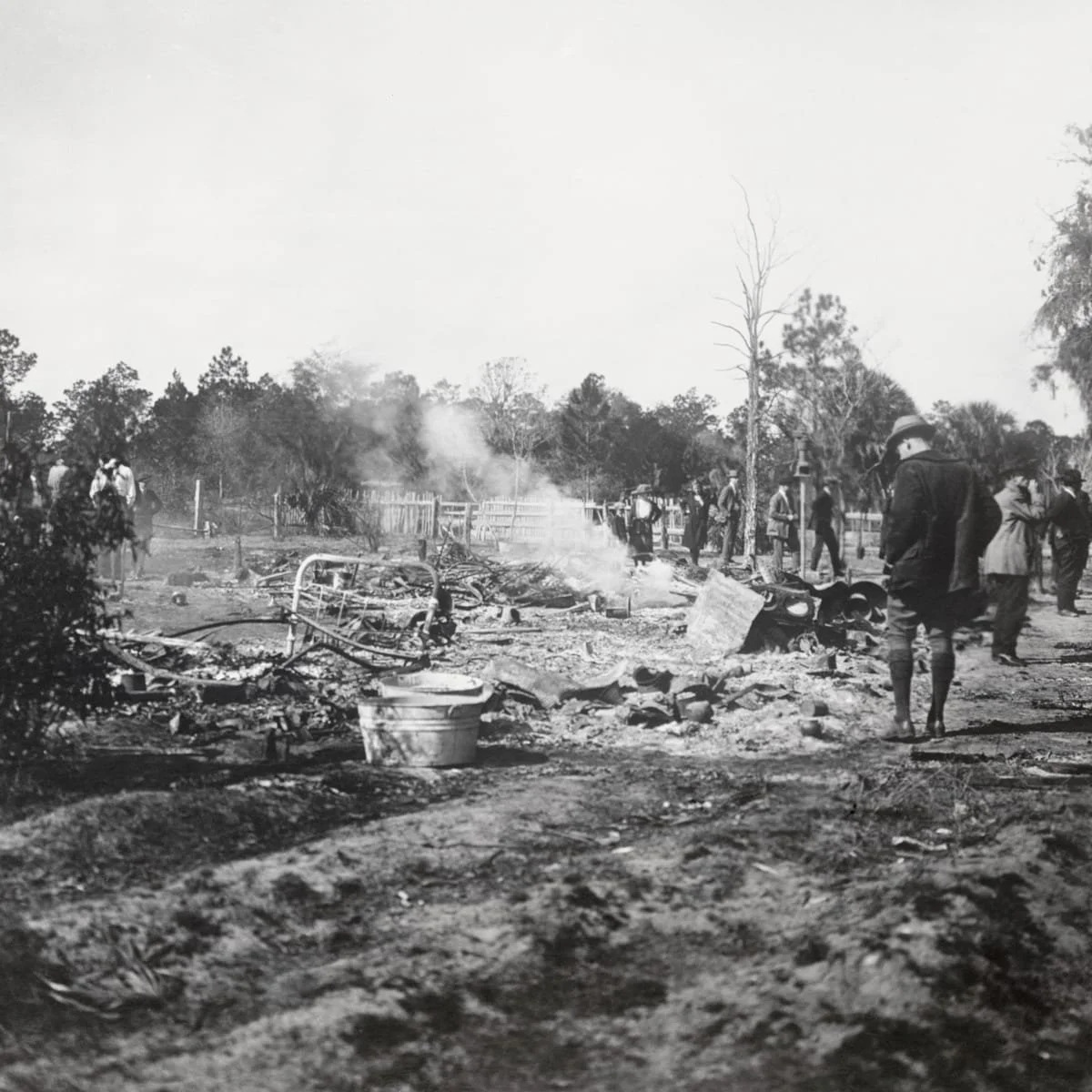“The Rosewood Massacre: A harrowing tale of racism and the road toward reparations”
Original Article by Jessica Glenza of The Guardian, 2016. Source
On New Year’s Day 1923 a white woman was beaten and residents of Sumner, Florida, claimed her assailant was black – which sparked race riots where the casualties were mostly black and hate wiped out a prosperous town
On New Year’s Day 1923 a white woman was beaten and residents of Sumner, Florida, claimed her assailant was black – which sparked race riots where the casualties were mostly black and hate wiped out a prosperous town
Four black schoolchildren raced home along a dirt road in Archer, Florida, in 1944, kicking up a dust cloud wake as they ran. They were under strict orders from their mother to run – not lollygag or walk or jog, but run – directly home after hitting the road’s curve.
The littlest, six-year-old Lizzie Robinson (now Jenkins), led the pack with a brother on each side and her sister behind carrying her books.
“And I would be [running], my feet barely touching the ground,” Jenkins, now 77, said at her home in Archer.
Despite strict adherence to their mother’s orders, the siblings weren’t told why they should race home. To the children, it was one of several mysterious dictates issued during childhood in the Jim Crow south.
As Jenkins tells it, the children didn’t know why Amos ’n’ Andy was often interrupted by revving engines and calls from her father to “Go upstairs now!”, or why aunt Mahulda Carrier, a schoolteacher, fled to the bedroom each time a car drove down their rural road.
Explanations for demands to hide came later, when Jenkins’s mother, Theresa Brown Robinson, whispered to her daughter the story of violence that befell the settlement of Rosewood in 1923.
The town was 37 miles south-west of Archer on the main road to the Gulf. Carrier worked there as the schoolteacher, while living with her husband Aaron Carrier. On New Year’s Day 1923, a white woman told her husband “a nigger” assaulted her, a false claim that precipitated a week of mob violence that wiped the prosperous black hamlet off the map, and led to the near lynching of Aaron Carrier.
Read full article at The Guardian



